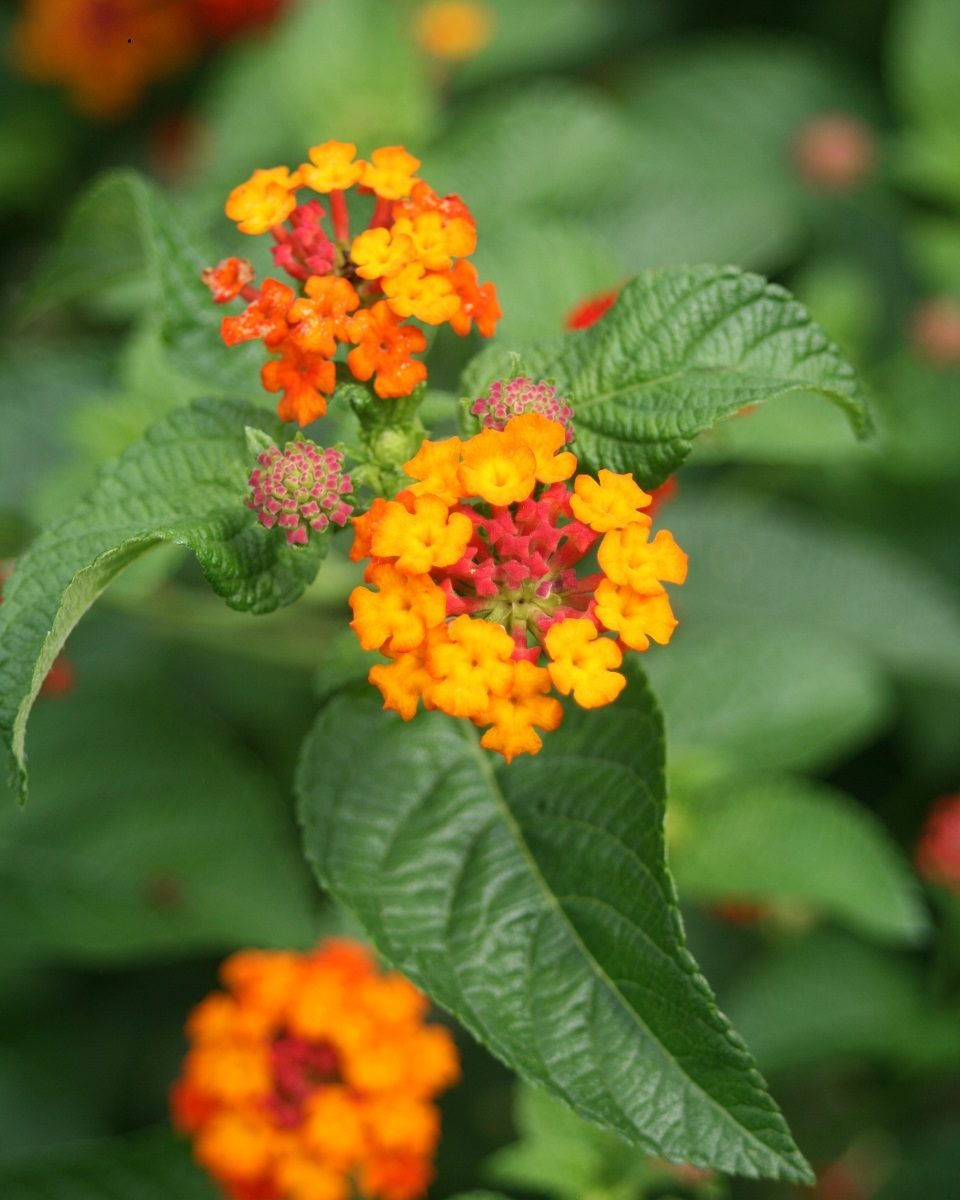
Submitted by Beth Willis, Trials Coordinator, UT Gardens-Knoxville
Gardeners are always seeking those plants that provide a long-lasting show in the garden while requiring little care and maintenance. Lantana fulfills both those goals and is attractive to butterflies as well.
Lantana camara, commonly known as lantana or shrub verbena, is native to Central and South America but has naturalized in much of the southeast United States. The species can grow to 6-feet tall and 8-feet wide, with heavily textured dark green foliage. Abundant, 1- to 2-inch clusters of blooms in shades of red, orange, yellow, pink, and even purple cover the plant throughout the entire summer.
Lantana prefers full sun sites and thrives in heat and humidity. It is hardy to zone 9, but performs as a trouble-free annual in colder zones, where it will bloom heavily throughout the summer until frost. Once established it is drought tolerant. Although the species will self-seed, most of the ornamental cultivars do not breed true from seed and so are propagated through cuttings.
Larger cultivars of lantana make a great backdrop for smaller plants when placed in the rear of landscape beds, while smaller groundcover varieties are best placed in the front of beds. Either type performs well in containers. They are very attractive to butterflies. Lantana can be trained as a standard, when grown in frost-free zones or when brought into a greenhouse or garage for the winter. It is not susceptible to any significant pest or disease problems, and it has no major maintenance issues. Once planted and established, it is remarkably carefree in the garden.
Although the species can be aggressive in zones where it is not killed by frost (to the point of being considered a noxious weed in many parts of the world), numerous cultivars are available that are smaller and better behaved. Hybrids of Lantana camara and Lantana montevidensis, a trailing type of lantana, are also available on the retail market, so gardeners have a wide range of sizes, habits and bloom colors from which to choose.
Beth Willis is the trials coordinator for the UT Gardens-Knoxville. The University of Tennessee Gardens located in Knoxville and Jackson are part of the UT Institute of Agriculture. Their mission is to foster appreciation, education and stewardship of plants through garden displays, collections, educational programs and research trials. The gardens are open during all seasons and free to the public.
See http://utgardens.tennessee.edu/ and http://westtennessee.tennessee.edu/ornamentals/ for more information.
Contacts:
Beth Willis, Trials Coordinator, UT Gardens-Knoxville
Patricia McDaniels, UTIA Marketing and Communications Services, 615-835-4570